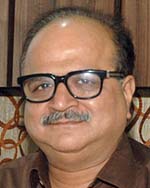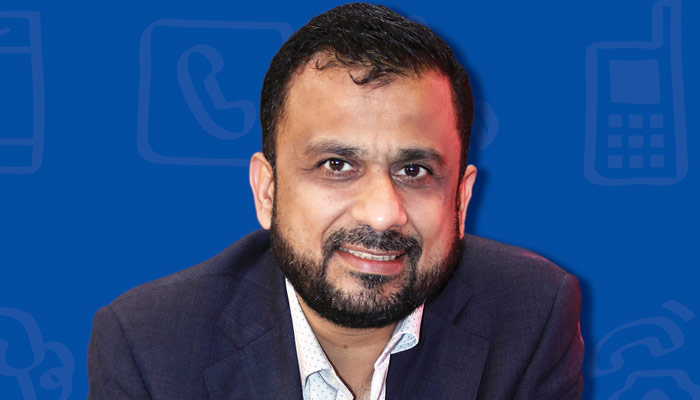By IE&M Research
India is one of the most prominent markets for mobile phones, surpassing the United States and second only to China. At the stroke of the new millennium, India had about 3.58 million cellular subscriptions which grew 200-fold to reach 752.19 million by the end of the decade, and further to about 1.127 billion over the next six years, i.e., 2016; this trend was largely driven by feature phones. Another drive was led by Smartphone which had already reached 21.2% of its population by 2014. The government’s much appreciated Digital India initiative has further accelerated the growth.
Mobile Internet users in the country are estimated to have touched 300 million users by end of 2017 and with increasing network infrastructure development and rising use of wireless technologies such as 3G and 4G, the overall Internet user base in India is expected to be around 600 million users in 2020, accounting for 27% penetration.
While the introduction of feature phones in the country during the last decade of the 20th century found good penetration, introduction of Smartphone galvanized the market further. The demographic profile has also undergone a characteristic evolution, and Gen Y, the working-age population, and the great Indian middle class have evolved. A study report says that 64% of the total Indian population will be urbanized by 2025, and cities will account for 70% of India’s GDP in 2030. As a result Smartphone are expected to outrun feature phones in the country by 2019. According to a study the mobile phone market in terms of value will grow at a CAGR of 23.4% due to the increased adoption of Smartphone.
With the exception of a temporary dip in demand during the last quarter of 2016 due to demonetization, the demand for mobile phones remains undeterred. Consumers are extremely intelligent as they survey models in a brick-and-mortar retail outlet and compare the prices with the online portals. Price is still the top-most factor driving purchase.
Obviously, most global handset brands and manufacturers are eyeing India. According to India Cellular & Electronics Association (ICEA) the domestic handset manufacturing ecosystem has garnered a whopping Rs 3 lakh-crore in savings for India by replacing imports of completely-built units (CBUs) with locally assembled and manufactured mobile handsets over the past four years. In 2017-18 over 225 million handsets were assembled/manufactured in India, which was roughly 80% of the total market requirement. The ICEA estimates the local mobile handset manufacturing ecosystem to generate mobile phones collectively valued at Rs 1,65,000 crore by 2018-19, and pegs the turnover volume at 290 million handsets during the same period. In the first 2 quarters itself, the total value of locally manufactured handsets, it estimates, will exceed Rs 75,000 crore while the turnover volume is estimated at 130 million.
ICEA believes that mobile phone imports will trickle down to an insignificant level of around 5-7% of the market – or less than Rs 1,000 crore a month by end-FY18 as India is rapidly moving towards near zero imports for mobile phones. The net foreign exchange savings, according to ICEA, is already estimated to be over Rs 60,000 crore. “While CBU imports have come down drastically, import of sub-assemblies and components though has gone up,” ICEA said.
The Indian mobile phone market grew by 48% YoY in Q1 2018 driven by strong demand from the feature phone segment. The Smartphone market remained flat YoY. The performance of Chinese brands remained strong, accounting for 57% of the total Smartphone market in Q1 2018, up from 53% during Q1 2017. This is the highest ever contribution by Chinese players in the Indian Smartphone market. However Smartphone segment contributed to half of the total handset market during Q2 2018 and the top five brands captured a record 82% share of the total Smartphone market during the quarter. Xiaomi recorded its highest ever shipments in India during Q22018.
Demand of a Tax holiday
Handset makers have proposed a 10-year tax holiday on export of mobile phones, saying it will give India a competitive edge, without which the government’s aim of making the country a manufacturing hub and reducing imports will be hard to achieve. Their argument is: the plan to bring the component ecosystem into India gradually through the phased manufacturing programme (PMP) will not succeed unless it is complemented with a large market. India does not offer the required scale to attract high-end component makers of key products such as printed circuit boards and LCD screens to set up shop in the country, and targeting the export market could help bridge the gap.
The demand is valid and justified on the financial front also. Let us accept the truth that at present, virtually nothing is being exported from the country from this sector. Hence there is no question of any loss to the exchequer due to export sops. And secondly, once this industry is built, the government will still have immense gains due to income tax and GST collection on account of millions of job created and an estimated value generation of $400 billion within the country.
In India, about 110 million mobile phones were manufactured in 2015-16 as compared to 60 million in 2014-15 thereby recording over 90% growth. Moreover, India’s mobile manufacturing industry produced mobile phones worth Rs 54000 crore in FY15-16 as compared to Rs 18900 crore in FY14-15. By the end of 2017, the number reached Rs 94000 crore. In 2014 India produced 5 crore mobile phones which were made locally which increased to 15 crore in 2015-16. It further grew to 22 million mobile phones in 2017. The industry is expected to produce 50 million mobile phones by 2020. Within three years, the industry added 120 units out of which 54 units are in Noida alone. Not to forget the industries employ 5 lakh people.
India becomes world’s second largest mobile phone producer
According to data shared by market research firm IHS, China’s National Bureau of Statistics and Vietnam General Statistics Office, India accounted for 11% of global mobile production in 2017 compared to 3% in 2014. In the process India replaced Vietnam to become second largest producer of mobile phones in 2017. With the rise in mobile phone production, imports of the devices in the country also reduced to less than half in 2017-18. India’s completely build units as percentage of domestic market have now come down from 78% (2014-15) to 18% (2017-18). The fast track task force, a body under Ministry of Electronics and IT, has set target to achieve around 500 million mobile phone production in India by 2019, with value estimated to be around USD46 billion. An industry body, FTTF, has set target to create USD8 billion components manufacturing as result of growth in mobile phone production and create 1.5 million direct and indirect jobs by 2019. The body has set the target to export 120 million mobile phone units with an estimated value of USD1.5 million by the end of next year.
Face to Face
“Omnichannel to drive second stage of growth”
says, Essa Merchant, Managing Director, Advanced Computers & Mobiles India Pvt. Ltd.
Aggressive, ambitious, creative, very industrious, upbeat and much gregarious – the list of adjectives for Mr Essa Merchant, the 45 year old Managing Director of Advanced Computers and Mobiles India Private Limited, is too long. With a burning passion for technology, in a literal sense, he is not a first generation entrepreneur but very much he is since he didn’t join his century-old family business in timber and charted his own path at a very young age.In the mid 1990s, Essa Merchant dropped out of college causing concern among his family members, and to make it worse, declaring that he had no interest in his father’s business. His destiny had something bigger for him in store. Young Essa, who was swayed by technology, got the first taste of real technology when Pager, a small time wireless telecommunications device that receives and displays alphanumeric or voice messages, was introduced in India. The paging technology fired ‘entrepreneur’ Essa Merchant’s imagination who realized its business potential and found an opportunity to excel.Although now the technology is absolutely outdated, it was introduced on a big scale; the government had granted 94 licenses in 27 cities among 15 companies. Pager provided connectivity on the move and suddenly everyone wanted to have a piece of the new toy. Mr Essa Merchant jumped with full force, sourcing pagers at rates lower than the market and selling it through classified advertisements in local newspapers. Soon he was able to set up Advance Computers after borrowing small amount of money from his father who was too happy to help his college-dropped out son. The year was 1995 and Essa Merchant had just celebrated his 23rd birthday.Soon the demand for pagers skyrocketed and Essa Merchant’s business was established in no time. He hired scores of young boys to deliver pagers just like the way Pizza is delivered. It was a very innovative and an out of box idea. He hired 12 bikers in Mumbai as part of his express and speedy delivery system which proved to be the most speedy mobile phone distribution network. Mr Essa Merchant’s father Mr Ismail Essa Merchant heaved a sigh of relief with full belief that the boy has arrived.But the era of pagers in India was short-lived as they were soon replaced by mobile phones. However, the young entrepreneur was not at all disturbed. Having established a huge clientele for pagers and a well-knit distribution network he smoothly switched to distributing mobile phones to the same clients. The process was swift and easy.Over the years his company has distributed almost every global and domestic brand of mobile handsets, including BlackBerry. Now the company is a very prominent integral part of distribution networks of India with its own established channel across the length and breadth of the country. Its pan-India distribution network cannot be ignored by any player entering in India. The reason some of the best known brands like Lenovo Smart phone have it as their national distributor. The company also has its own brand Fox Mobiles, comprising both Smart phone and Feature phone which have good presence in tier 2 and tier 3 cities of northern and southern parts of the country.In Mr Essa Merchant’s scheme of things planning to the last details gets highest importance. He is quite a meticulous planner. Sitting in his plush office near the iconic Flora Fountain, he is constantly updating scores of whiteboards fitted on the two walls – with numerous jottings, listing out the tasks to be completed in the month, in the quarter and of course annual targets. He has not spared even his table where he lists out the day’s tasks to be completed. He is a visionary, and has been the force behind bringing in many revolutionary products to Indian consumers.In the last 24 years of its existence Advanced Computers and Mobiles India Pvt Ltd has completed two rounds of success trajectory. Now as the times are changing very fast with digital technology, it has prepared itself for the third round with more vigour. Indian Economy & Market met with Mr Essa Merchant to understand the mobile handset industry in India, his future strategy, and the way the Advanced Computers and Mobiles is headed to.
You had been part of the industry from the day one.
You’re right. Our experience of more than 24 years spans the age of the Indian Telecom Industry. Integrity, honesty and transparency are the three main pillars of strength which have brought us to this stage and these are applicable to everyone associated with the group. With our proficiency in the field, a clean business ethics and striving to have a very deep-rooted relationship with everybody have established us as leading partners for some of the biggest brands. Along with our subsidiaries, we have demonstrated our capabilities by maintaining a grip in the rough times by efficiently utilizing our large distribution network; prudent risk management capabilities and a smart, trained and talented work force. This has enabled us to emerge as Market Leaders. Our distribution network, experience and high market penetration offers the most promising route for any brand to one of the most potential markets in the world.
How was the journey so far?
Excellent would be the best word to describe our journey. We started in 1995 as a small time pager distribution company, and later shifted to mobile phone. As a part of the second largest Telecom market in the world, Advanced Computers & Mobiles has grown exponentially. The best part is that it is well equipped to serve country’s telecom and technology needs. We have our network spanning pan India with over 10,000 retail touch points. Our team consists of over 250 highly skilled and experienced professionals and we provide quality services for a variety of telecom products.
Even after so many years, what makes you relevant?
Currently, what makes us relevant is that we have a pan India distribution network. Still it is the traditional distribution model which remains relevant and new brands entering in India are very cautious about this because it is very difficult to manage such a huge network. Nowadays due to e-commerce it is much easier for them to enter online first and then go offline sale slowly. But again there are a lot of challenges. Offline is always a challenge but the potential is huge. First it was offline then came online and the next frontier in online is the new retail, also known as Omnichannel, that’s where we are headed to.
I think life is a journey. I don’t compartmentalize it in success and failure. I’m blessed that I got a very efficient team who are equally passionate, equally eager to explore new ideas, without losing our core values. Integrity, honesty and transparency are the three main pillars of our strength.
What do you mean by Omnichannel really?
Omni means, in literal term, the integration of all physical channels (offline) and digital channels (online) to offer a unified customer experience. Retail, until the early 1990s, was either a physical brick and mortar store or catalog sales where an order was placed by mail or via telephone. So, Omnichannel is where your offline and online endeavors come together. Omnichannel means single channel – you are merging offline and online. Everything is tightly integrated into your sales system through software, through financial services, through product portfolio, exclusive products and your offline brick and mortar store has an advantage what a Flipkart seller has. The advantage is, like Flipkart, which is a marketplace; your message goes across when you have promotions, since it’s all centrally controlled. In a single stroke the message is carried forward to the last point.
Since all the retailers are listed in a central database, you can search your nearest brick and mortar store where you can go and see the the actual handset; you can buy there as the best part is a price uniformity. Price remains same – Online and offline. That is the concept of Omnichannel or new retail.
Is it different from multichannel?
Yes. The major difference between Omnichannel and Multichannel is the level of integration. Multichannel is usually identified as a non-integrated way to approach customers and inventory holdings, while Omnichannel requires coherent and absolute inventory integration. It’s, in fact, another level. We realized in time the opportunities and advantages of integrating multiple channels by adopting an Omnichannel approach. The boundaries between channels tend to vanish in an Omnichannel environment, giving the customer a consistent brand experience. Retailers also needed ways to integrate their online and offline channels to avoid segregated campaigns. Omnichannel solutions also allow us to tighten controls and optimise the product inventory across numerous sales channels, ensuring that the optimum stock levels are situated in each location and the channels are kept up to date with stock information.
In simple terms, Omnichannel means having a uniform customer experience. Consumers can shop the same way through in-store, website, and mobile. Regardless of the customers’ location and time. The order can be delivered to the address directly, collected at the store, or collected from a retail partner.
What else is the benefit of Omnichannel?
The major advantage of Omnichannel is, in long run it becomes a platform. You can leverage it to get exclusive products, get exclusive deal, use it to get financial support from banks to not just customers but also to retailers. Dealers can give them channel financing; so all this comes together.
So now your focus is shifting from offline?
No. Even today we are a traditional distribution company but the future of retail is evolving and we have to keep pace. Online and offline both are going in the same direction – Omnichannel, which Jack Ma describes as new retail. That is the future of retail. After this, it would be Flexi Store. When everything is integrated then we can go in for flexi store which is centrally controlled. Then you can have cashless checkout, no checkout – you can just pick up and walk out, it will be automatically deducted from your credit card or wallet.
As a traditional distribution company few years ago we thought what should we do. Online is picking up, offline is still there and both have huge potential. So we made an investment in an Omnichannel company – a startup. Apart from the traditional distribution that we have in India, we have also made good development in e-commerce where we have tied up with Alfa Sellers on Amazon and Flipkart and also sell directly.
What’s an Alfa Seller?
Alfa Sellers are basically a kind of proxy of the portal itself like Cloudtail and WS Retail. We use their services to sell Alcatel, Philips mobile phone and also in talks for a new brand which we are launching on Flipkart before Diwali. We are ourselves sellers on these portals but we can’t be Alfa Sellers since we are not proxies of the portals. We have separate divisions with experienced team members to handle e-commerce.
We have our own PayTm Mall, and also present on Amazon, Flipkart, and Shopclues. We are gold standard sellers on these portals (top 3%). So that covers e-commerce. Our traditional offline is very active and we also have the upcoming Omnichannel which will add another 5000 premium counters. This is the sales side of things.
Apart from this we also provide additional support to the new brands entering India. For this we have an inhouse division which takes care of production; we have a team of engineers to look after manufacturing and quality control, whether compliances like BIS standards, MRP etc. are followed. We assist the new brands as they want to spend as little as possible on such things in India and still get a start. This allows them a very low risk option. We don’t charge anything for this as long as we are distributing the product.
Do you think Make in India has played any role?
A big role, in fact. Because of Make in India push from the government we have the duty structure in such a way that if you import a complete body unit the duty rate is 10% with 12% GST. But if you import as semi knocked down or complete knock down the duty structure is very less. For semi it goes 2-3% and for complete it goes down to zero or 1%. To a company as well as the consumer it makes a huge difference and also helps the company to stay in the stiff competition.
Omnichannel is where your offline and online endeavors come together. It’s the integration of all physical channels (offline) and digital channels (online) to offer a unified customer experience. This is the future of retail and that’s where we’re also headed to.
But China is said to have an advantage over here?
No, the truth is, the assembly in India is, in fact, cheaper than China. In terms of absolute rupee we can assume it is same cost or lesser in India. So whatever you save over there you spend over here. The actual saving is in duty. Government wants the brands to import component and assemble in India, manufacture in India and then sell in India. It is not only to create jobs, but to create a complete ecosystem. It encourages people to invest in India in infrastructure, and establish factories. It encourages PCB, LCD, battery and other component manufacturers to set up factories.
All the way from components like packing material to higher end material; maybe sooner we may be able to manufacture chips also. So the government has its vision where it slowly changed the duty structure so as to internalize as much as possible in India. For established players like Xiaomi and Samsung it’s different. When Xiaomi entered a few years ago there was no Make in India. But they had an advantage where they could come in and disrupt with imported products. For an upcoming brand today, it is not so easy to pay the import tax and still be competitive.
To set up a factory you have to hire local engineers; if they give to contract manufacturer even then good amount of money has to be invested. So this complicates things and it becomes a huge barrier to entry. Some may decide that they’ll take the hit initially, make a loss and recover when they achieve volume. But it’s not something that’s sustainable.
So here your company enters?
Yes, to solve the complicated dilemma and to help out brands. As I said we’ve a division that helps them in manufacturing and procurement. We also have few contract manufacturers where we recommend them. Thus we handle the whole things from the start till the retail sale.
How is the competition in this field?
Absolutely nil. See, we’re small and we are hungry so we are willing to be more flexible to reach out more places and do more things. There are some big companies but they are very rigid. They are basically into distribution and they don’t take up such things. But we say – we’ll manufacture, sell through our distribution network of regional distributors, sell through e-Commerce Alfa Sellers, and we’ll also sell to customers directly, as an e-Commerce Marketplace seller. In this future we will add a separate Omnichannel as well which will integrate into our distribution network. We provide all these services without any additional charge.
How is your own brand being positioned?
Fox Mobiles is our own brand which is firmly targeted at the low end entry level segment. Both sales and service is pan-India and handled by us and serves as an excellent example of our capabilities in distribution, online retail and manufacturing prowess. Our focus, however, still remains distribution whether it be our brand or another brand. Our product is our distribution network.
It must be very difficult to handle a pan-India network?
Distribution channel is not like you set up and it’s done. It requires continuous churn and strict management on the ground level. You’ll have to maintain cordial relationship with distributors. As they say, in seven years human body is completely new; the same applies to distribution channel. The churn is so much that whole distribution channel might have evolved over time.
How do you feel being a successful entrepreneur?
Whatsoever I take up I do my best and never compromise on quality. That is my strength. I think life is a journey. I don’t compartmentalize it in success and failure. The company as well as my self graph is going up and that’s the biggest reward I feel I’ve got. I’m blessed that I got a very efficient team who are equally passionate, equally eager to explore new ideas, without losing our core values.
People behind the success story
Mr. Nitin Pandita, Buisness Head 
An Electronics and Communication Engineer, Nitin Pandita has his expertise in Strategic Planning, Channel Sales, and Business Development & Distribution Management. He drives the sales function of the group across the country. His rich experience with reputed telecom companies in domestic and international markets- Bharti Telecom, Brightstar, Salora International & BrightPoint enables him to drive the national sales effectively.
Mr. Amarendra Totade, CFO 
A Chartered Accountant with experience of more than 22 years in the area of Finance, Accounts, Supply Chain Management in various industries – Telecom, Heavy Engineering, NBFC, Reliance Communications, Crompton Greaves, Mega Fin (India) Ltd., Amarendra Totade heads the Group Finance & Logistics function. He specializes in financial management, cost optimization, and productivity improvements through internal controls and processes. He is proficient in conceptualizing and implementing financial procedures, including working capital management, internal financial controls and costing.
Imran Merchant, Product Head 
With an eye for new opportunities, the man who is a kind of encyclopedia on mobile phone industry, Imran Merchant knows the domestic as well as the international trends very well. Equipped with his own well researched ideas and innovative approach, an Engineer by profession and with a diverse work experience of design and development of electronics, Imran takes a keen interest in marketing and solving end user problems with well-designed products and services.






















